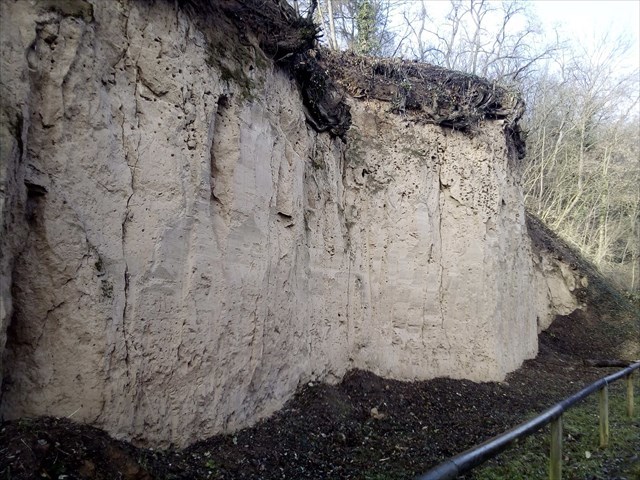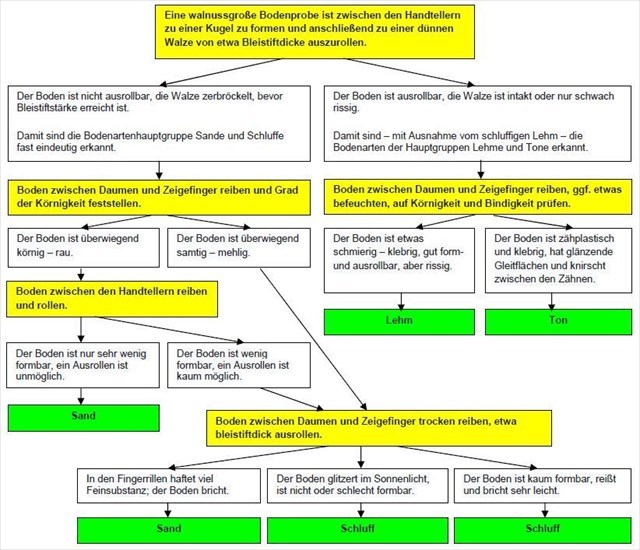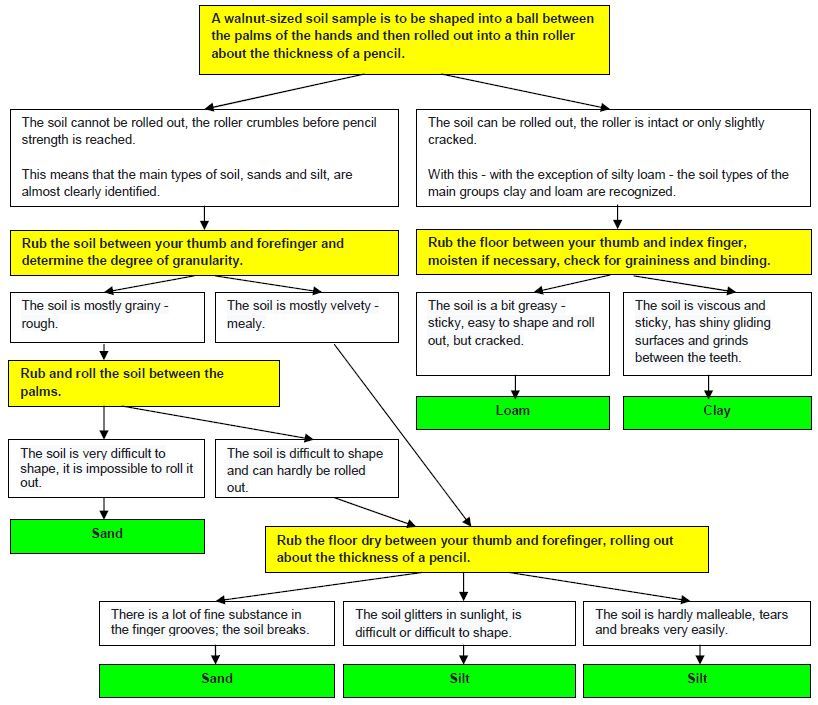


Löss ist ein staubähnliches, sehr feinkörniges Lockersediment, das größtenteils durch Quarz bestimmt ist. Die durchschnittliche Korngröße beträgt 0,01 bis 0,05 mm und wird deshalb dem Schluff zugeordnet. Die Form der Lösskörnchen ist häufig kantig, was seine gute Standfestigkeit begünstigt. Die typisch ockerfarbene bis gelb-braune Färbung von Löss ist auf Gehalte von Eisenoxiden und Eisenhydroxiden zurückzuführen. Der Löss wurde während der letzten Eiszeit, vor etwa 30000 Jahren, durch Nordwestwinde aus dem Rheintal hierher geweht und blieb im Schatten des Schnarrenbergs liegen.

Der Löss enthält viele kleine Poren, so dass Regenwasser leicht durchsickern kann. Dringt nun in die Lössablagerungen kohlenstoffdioxidhaltiges Wasser ein, werden kalkhaltige Bestandteile im Löss an der Oberfläche gelöst. Der gelöste Kalk wird mit dem Wasser in tiefere Bereiche verlagert und kristallisiert später aus. Dadurch erhält Löss eine Festigkeit, gleichzeitig werden die vormals Wasser führenden Kapillaren stabilisiert und ermöglichen eine gute Wasserzirkulation.
Die Korngrößenverteilung eines Bodens zählt zu seinen physikalischen Eigenschaften. Die Fingerprobe ist eine Methode zur Bestimmung der Bodenart oder Körnung. Sie nutzt verschiedene physikalische Eigenschaften einer feuchten Bodenprobe zur Bestimmung einer Bodenart und spricht dabei besonders die Körnigkeit, die Mehligkeit und die Bindigkeit einer Bodenprobe an.
| Bodenart |
Eigenschaften |
| Ton |
Gut formbar, klebrig, bindig, „schmutzt“ und zeigt glänzende Gleitflächen. |
| Schluff |
Mäßig formbar, kaum bindig, von samtig-mehliger Beschaffenheit, „schmutzt“ nicht und zeigt raue
Gleitflächen. |
| Sand |
Nicht formbar, „schmutzt“ nicht und ist sicht- und fühlbar körnig. |
| Lehm |
Enthält Ton, Schluff und Sand in unterschiedlichen Anteilen. Die dominierende Kornfraktion bestimmt seine überwiegenden Merkmale
|
Nachfolgend eine vereinfachte Vorgehensweise zur Fingerprobe:

Quellen
Beantworte folgende Fragen:
- Wodurch ist es wohl möglich, dass die Aufschlusswand nahezu senkrecht ist und doch nichts abbricht?
- Führe vor Ort eine Fingerprobe durch. Benutze dazu bitte Material, dass bereits am Boden liegt. Welche Bodenart liegt vor?
- Was sind die weißen Stückchen, die überall in der Wand gut zu erkennen sind (Informationen dazu findest du vor Ort) und was sagt dir die Verteilung über den zeitlichen Entstehungsprozess der Wand?
- Mach bitte ein dem Foto von dir oder einem Zettel mit deinem Cachernamen und Datum vor der Wand.
Sendet mir die Antworten über mein Profil. Ihr könnt gleich loggen und braucht nicht auf meine Freigabe zu warten. Sollte etwas mit den Antworten nicht stimmen, melde ich mich bei euch.

Loess is a dust-like, very fine-grained loose sediment, which is largely determined by quartz. The average grain size is 0.01 to 0.05 mm and is therefore assigned to the silt. The shape of the loess granules is often angular, which favors its good stability. The typical ocher to yellow-brown color of loess is due to the content of iron oxides and iron hydroxides. The loess was blown here by northwesterly winds from the Rhine valley during the last ice age, about 30,000 years ago, and remained in the shadow of the Schnarrenberg.
The loess contains many small pores so that rainwater can easily seep through. If water containing carbon dioxide penetrates into the loess deposits, calcareous components are loosened in the loess on the surface. The dissolved lime is shifted to deeper areas with the water and later crystallizes out. This gives loess a firmness, at the same time the capillaries that previously carried water are stabilized and enable good water circulation.
The grain size distribution of a soil is one of its physical properties. The finger test is a method for determining the type of soil or grain. It uses various physical properties of a moist soil sample to determine a soil type and particularly addresses the granularity, flouriness and cohesion of a soil sample.
| Soil |
Characteristics |
| Clay |
Easy to shape, sticky, cohesive, "dirty" and shows shiny sliding surfaces. |
| Silt |
Moderately malleable, hardly cohesive, of velvety-floury texture, does not "get dirty" and shows rough
sliding surfaces. |
| Sand |
Not malleable, does not "get dirty" and is visibly and noticeably granular. |
| Loam |
Contains clay, silt and sand in different proportions. The dominant grain fraction determines its
predominant characteristics. |
Below is a simplified procedure for finger testing:

References
Answer the following questions:
- How is it possible that the digestion wall is almost vertical and yet nothing breaks off?
- Do a finger test on site. Please use material that is already on the floor. What type of soil is there?
- What are the white pieces that can be easily recognized everywhere in the wall (you can find information on site) and what does the distribution tell you about the temporal process of arising the wall?
- Please take a picture of yourself or a piece of paper with your cache name and date in front of the wall.
Please send the answers via my profile. You can log immediately and have not to wait for approval. Is something not correct with the answers, I will contact you.